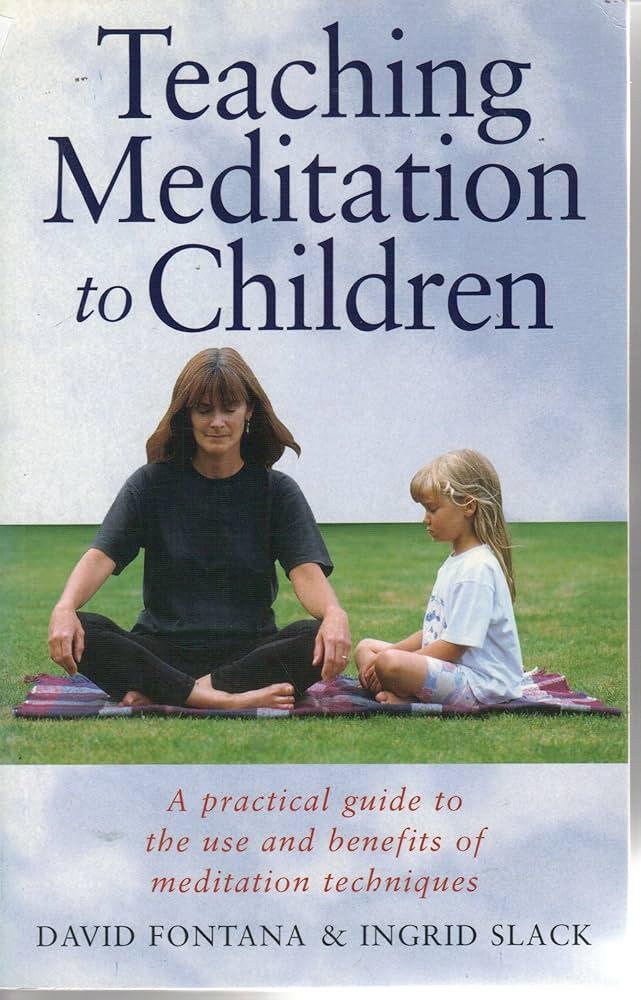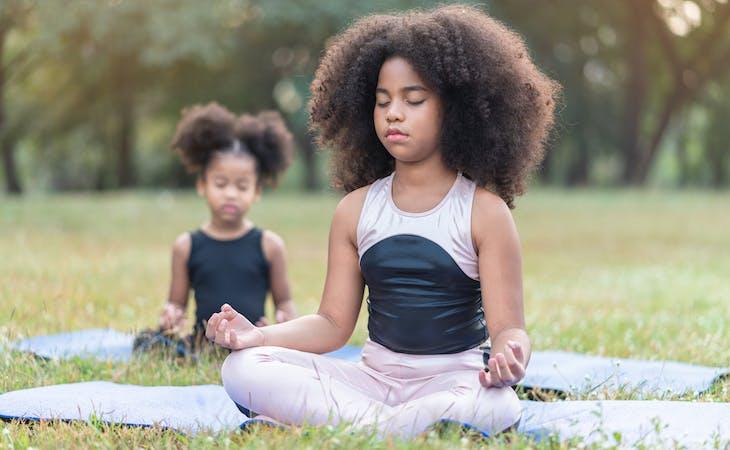In a world that hums with the relentless buzz of technology and the constant whirl of activities, even the youngest among us are swept into the fast-paced current. As parents and educators seek ways to nurture well-being and resilience in children, the ancient practice of meditation emerges as a potential oasis of calm. Yet, as we explore this serene landscape, questions arise: Is meditation truly suitable for children? Can its quiet power be harnessed to benefit young minds and hearts, or does it demand a maturity beyond their years? This article delves into the gentle art of meditation, examining its promises and pondering its place in the lives of children today. Join us as we navigate this tranquil yet intriguing territory, seeking clarity on whether meditation can indeed be a guiding light for the youngest members of our society.
Exploring the Benefits of Mindfulness for Young Minds
In a world brimming with distractions, mindfulness offers a serene refuge for children, nurturing their emotional and mental well-being. This practice encourages young minds to focus on the present moment, fostering a sense of calm and clarity. Studies suggest that meditation can enhance attention span, reduce anxiety, and improve emotional regulation in children. Moreover, by cultivating an environment of awareness, children learn to recognize and manage their emotions more effectively.
- Improved Focus: Regular practice can help children develop better concentration, making tasks like studying or listening in class more manageable.
- Emotional Balance: By understanding their feelings, children can navigate their emotional landscape with greater ease, reducing instances of tantrums or frustration.
- Stress Reduction: Mindfulness techniques equip children with tools to manage stress, leading to a more relaxed and happy disposition.
- Enhanced Empathy: As children become more attuned to their own emotions, they also develop a deeper understanding of others, fostering empathy and kindness.

Understanding Age-Appropriate Meditation Techniques
When introducing meditation to children, it’s crucial to tailor the techniques to their developmental stage. For younger children, aged 4 to 7, meditation can be as simple as guided imagery or mindful breathing. These practices can be framed as fun games where they imagine themselves as a gentle, floating cloud or a sturdy, calm mountain. The key is to engage their vivid imaginations while subtly introducing the concept of focused attention.
For older children, from 8 to 12 years, meditation can be slightly more structured. Techniques like body scanning, where they focus on relaxing different parts of their body, or gratitude meditation, where they reflect on things they are thankful for, can be beneficial. These practices help cultivate awareness and emotional intelligence, allowing children to explore their inner world safely. It’s essential to maintain a playful approach, ensuring that meditation remains a joyful experience rather than a chore.
- Keep it Short: Start with 3-5 minutes and gradually increase as they grow comfortable.
- Use Stories: Incorporate storytelling to make sessions more engaging.
- Encourage Consistency: Establish a routine, like meditating before bed or after school.

Guidelines for Introducing Meditation to Children
When introducing meditation to children, it’s essential to create a welcoming and engaging environment. Begin by choosing a quiet space where they feel comfortable and free from distractions. Keep sessions short, especially for younger children, as their attention spans may be limited. A few minutes a day is often enough to start. Consider incorporating playful elements, such as storytelling or visualization, to capture their imagination.
- Use Simple Language: Explain meditation in terms they can easily understand. Words like “quiet time” or “imagination journey” can be effective.
- Incorporate Movement: Start with gentle stretches or yoga poses to help them settle into the practice.
- Be Patient and Flexible: Every child is different, and it may take time for them to engage fully. Adapt the practice to their interests and comfort level.
- Lead by Example: Practice meditation yourself and let them see how it benefits you, making it a shared experience.

Balancing Meditation Practices with Playful Activities
Integrating meditation into children’s daily routines can be a harmonious blend of tranquility and joy. By infusing moments of stillness with elements of play, children can experience mindfulness without it feeling like a chore. This approach helps in nurturing a balanced lifestyle where both calm and creativity thrive. For instance, guided imagery can be transformed into a playful adventure where children imagine exploring a serene forest or floating on a cloud, enhancing their visualization skills while keeping the activity light-hearted.
To maintain this balance, consider incorporating the following playful activities alongside meditation practices:
- Nature Walks: Encourage mindfulness by focusing on sounds and sights, turning a simple walk into a sensory exploration.
- Yoga Games: Introduce basic yoga poses through fun games that promote both concentration and physical activity.
- Creative Storytelling: Use storytelling to create meditative narratives that captivate the child’s imagination.
- Art and Craft: Combine art activities with meditation by focusing on the process rather than the outcome, fostering a mindful art practice.
By seamlessly weaving these playful elements with meditation, children can develop mindfulness in an enjoyable and engaging manner, making it a natural part of their lives.
Closing Remarks
As we draw our exploration of meditation’s role in the lives of children to a close, we find ourselves standing at the intersection of tradition and modernity, where ancient practices meet contemporary challenges. In a world that often moves at breakneck speed, the gentle art of meditation offers a pause, a moment of stillness that can be as beneficial to a child as it is to an adult. Whether seen as a tool for emotional regulation, a pathway to enhanced focus, or simply a means to cultivate inner peace, meditation holds the promise of enriching young minds and nurturing resilient spirits. Yet, as with any journey, it is essential to proceed with care, listening to the unique needs and rhythms of each child. The question, then, is not merely whether meditation is suitable for children, but how it can be woven into the tapestry of their lives in a way that honors their individuality. As we continue to ponder this question, let us remain open to the possibilities that mindfulness can offer, embracing the potential for growth, understanding, and tranquility in the smallest among us.
